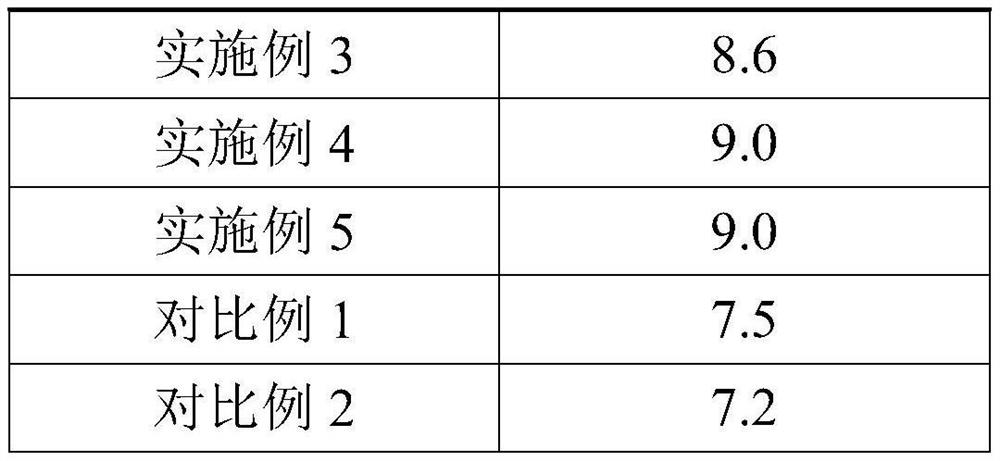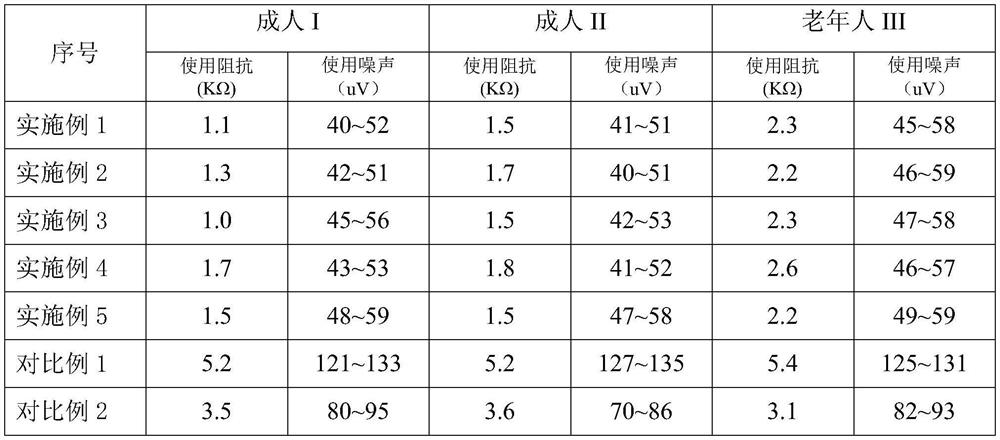Conductive liquid for electroencephalogram sensor
A sensor and conductive liquid technology, applied in conductive adhesives, electrodes, electrotherapy, etc., can solve problems such as prolonging test time and affecting medical work efficiency, so as to relieve medical pressure, improve medical work efficiency, and save test time Effect
- Summary
- Abstract
- Description
- Claims
- Application Information
AI Technical Summary
Problems solved by technology
Method used
Image
Examples
Embodiment 1
[0025] An EEG sensor conductive liquid, comprising the following components in mass percentage: 10% sodium chloride, 0.5% triacylglycerol acyl hydrolase, 10% glycerin, 10% pectin, 0.1% sodium methyl p-hydroxybenzoate, The rest is deionized water, the conductive liquid contains sodium bicarbonate, and the pH value of the conductive liquid is 8.
[0026] The preparation method of electroencephalogram sensor conductive liquid comprises the following steps:
[0027] (1) Add deionized water into the reaction kettle and heat it to 60°C and keep it constant, add 10g of sodium chloride, 0.5g of triacylglycerol acyl hydrolase, and 0.1g of sodium methyl p-hydroxybenzoate, at 200r / min Stir at a high speed for 15 minutes until all the added ingredients are dissolved;
[0028] (2) Mix 10g of glycerin and 10g of pectin evenly, adjust the stirring speed of the reaction kettle in step (1) to 40r / min, add the mixture of glycerin and pectin while stirring, and stir for 2h at a stirring speed o...
Embodiment 2
[0032] A conductive liquid for EEG sensors, comprising the following components in mass percent: 10% potassium chloride, 0.5% triacylglycerol acyl hydrolase, 10% propylene glycol, 10% gelatin, 0.1% ethylparaben, and the rest is deionized water, the conductive liquid contains sodium bicarbonate, and the pH value of the conductive liquid is 8.2.
[0033] The preparation method of electroencephalogram sensor conductive liquid comprises the following steps:
[0034] (1) Add deionized water into the reaction kettle and heat it to 60°C and keep it constant, add 10g of potassium chloride, 0.5g of triacylglycerol acyl hydrolase, 0.1g of ethylparaben, and stir at a speed of 200r / min 15min until all the added ingredients are dissolved;
[0035] (2) Mix 10 g of propylene glycol and 10 g of gelatin evenly, adjust the stirring speed of the reactor in step (1) to 40 r / min, add the mixture of propylene glycol and gelatin while stirring, and stir for 2 hours at a stirring speed of 200 r / min ...
Embodiment 3
[0039] An EEG sensor conductive liquid, comprising the following components in mass percent: 5% sodium chloride, 0.3% triacylglycerol acyl hydrolase, 20% glycerin, 15% pectin, 0.5% sodium methyl p-hydroxybenzoate, The rest is deionized water, the conductive liquid contains sodium bicarbonate, and the pH value of the conductive liquid is 8.6.
[0040] The preparation method of electroencephalogram sensor conductive liquid comprises the following steps:
[0041] (1) Add deionized water into the reaction kettle and heat to 65°C and keep it constant, add 5g of sodium chloride, 0.3g of triacylglycerol acyl hydrolase, 0.5g of sodium methyl p-hydroxybenzoate, at 300r / min Stir at a high speed for 15 minutes until all the added ingredients are dissolved;
[0042] (2) Mix 20g of glycerin and 15g of pectin evenly, adjust the stirring speed of the reaction kettle in step (1) to 30r / min, add the mixture of glycerin and pectin while stirring, and stir for 2h at a stirring speed of 300r / min...
PUM
 Login to View More
Login to View More Abstract
Description
Claims
Application Information
 Login to View More
Login to View More - R&D
- Intellectual Property
- Life Sciences
- Materials
- Tech Scout
- Unparalleled Data Quality
- Higher Quality Content
- 60% Fewer Hallucinations
Browse by: Latest US Patents, China's latest patents, Technical Efficacy Thesaurus, Application Domain, Technology Topic, Popular Technical Reports.
© 2025 PatSnap. All rights reserved.Legal|Privacy policy|Modern Slavery Act Transparency Statement|Sitemap|About US| Contact US: help@patsnap.com



